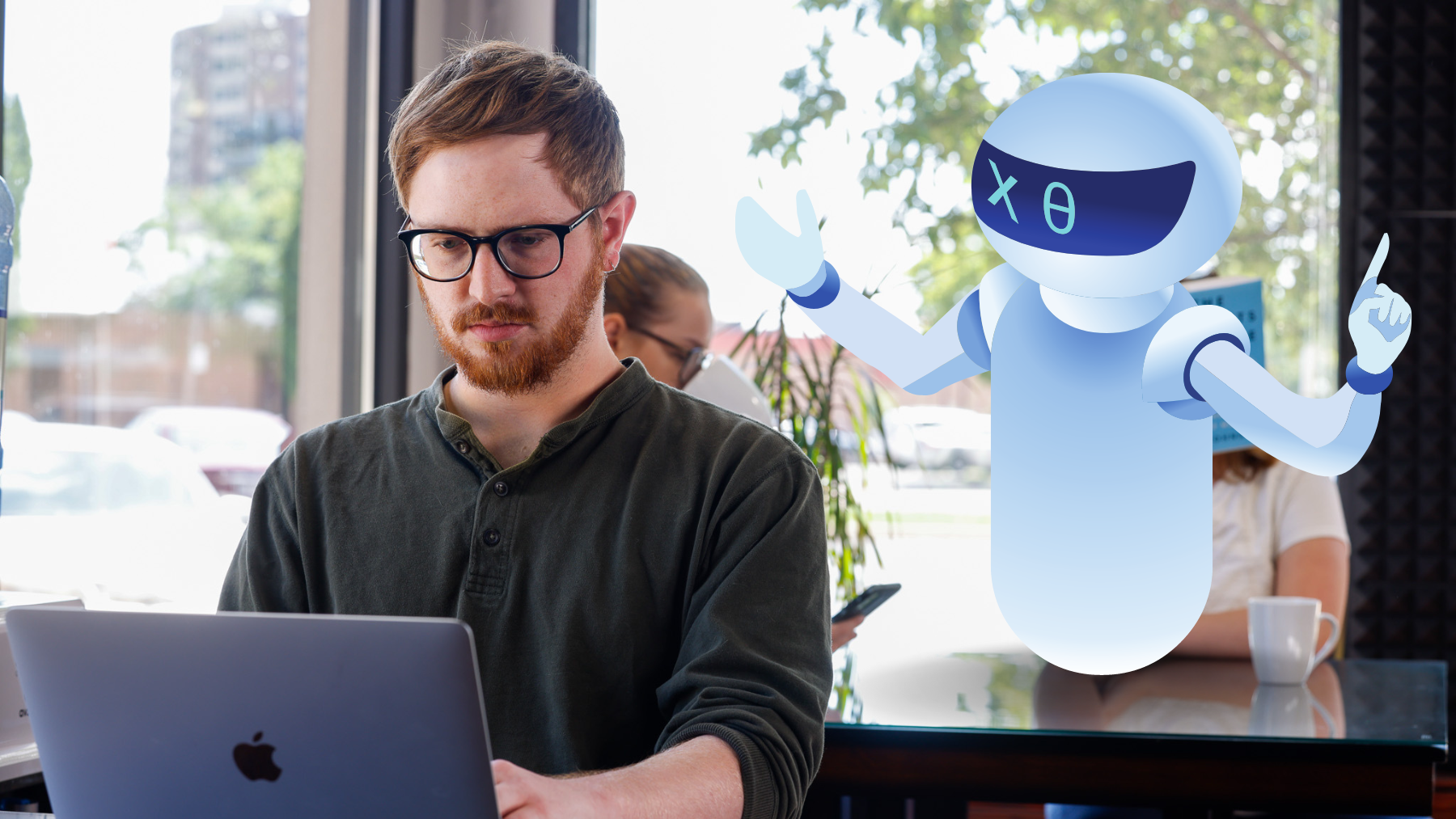
Intro to ChatGPT – Part 2: What Are the Limitations of ChatGPT?
ChatGPT’s release last year started a wave of speculation about how AI would transform how information is created and shared, especially in the digital marketing industry. However, it quickly became clear that ChatGPT limitations meant what people thought was a revolution was a lot closer to another evolutionary step in the future of AI.
Like many innovations that create a sensation, exaggerated claims and fears have emerged predicting the potential impact of the new technology. (We’ll look more closely at the controversy in the next blog, the third in a 3-part intro to ChatGPT.)
We’ve already talked about why ChatGPT caused a buzz, how it can be used, and why it was created in Part 1 – What Is ChatGPT?
In this blog, we take a sober look at some of ChatGPT’s limitations to discover how much of a game-changer it really is.
What Are the Limitations of ChatGPT?
Already, AI has made an impact on digital marketing. Chatbots, for example, have proven to be a great way to streamline marketing while improving targeting, reaching more people, and personalizing customer service. The uses for chatbots are virtually endless!
But when ChatGPT was first released in November 2022, it was easy to exaggerate its potential because it appeared to take such a big step toward AI technology simulating the thought processes, creativity, and intelligence of real people.
ChatGPT, which uses a browser interface, can also engage in 2-way dialogues. Not only that, but it understands multifaceted questions and can provide complete answers, even debating with you if you challenge its responses. Much has also been made of its creative abilities to tell stories and jokes and even write poetry.
But since its launch, users eager to test its potential have discovered many limitations of ChatGPT during the beta-testing phase.
GPT’s creator, OpenAI, has described some flaws of the text-generating AI tool, such as producing “falsehoods and illogical statements,” explaining the difficulties in overcoming them. Testing ChatGPT’s limitations are part of OpenAI’s plan to develop “increasingly safe and useful AI systems.” To this end, they continue to release upgrades as they resolve problems identified through user feedback.
While bugs and programming deficiencies are fairly easy to fix, other problems are more likely to limit the chatbot’s potential.
With all that said, here are the five biggest limitations of ChatGPT…
1. ChatGPT Can Answer Incorrectly
One of the most-talked-about ChatGPT limitations is that its responses may be wrong or just not make sense. This isn’t surprising, considering it creates responses from billions of sources, many of which are sure to be unreliable.
While some question-and-answer content sites have embraced the ChatGPT concept, others are more cautious about how it can affect the accuracy of their answers.
- Quora launched an experimental platform called Poe just weeks after ChatGPT’s release. Poe, which stands for “Platform for Open Exploration,” allows invited users to have back-and-forth dialogue with various AI agents. It’s meant to be a “fun way for people to interact with and explore different language models.”
- At the other end, Stack Overflow put a temporary ban on ChatGPT, preventing users from answering questions using the tool. Stack Overflow believes “the average rate of getting correct answers from ChatGPT is too low,” and its answers are “substantially harmful to the site and to users who are asking and looking for correct answers.”
2. It’s Confused by Ambiguity
Businesses already use AI chatbots for conversational marketing. They can help enhance customer service, providing automated answers to customers’ routine questions. But few can respond to more than the most common problems.
Anything that requires tact, problem-solving, or decisions is transferred to human reps.
ChatGPT is able to answer questions on a vast array of subjects and hold conversations. Some tech experts have speculated whether ChatGPT has taken AI to the point where it can handle jobs such as business negotiations or higher-level customer service queries.
Unfortunately, the current version of ChatGPT isn’t there yet. For one thing, it doesn’t have the skills or ability to use intuition, emotional intelligence, or empathy, which humans use to respond appropriately during social interactions as well as navigate long-term relationships.
Some AI assistant chatbots are making progress. They can now pick up verbal cues, respond to different emotions, and adjust their responses to match different moods.
But there’s still a long way to go…
3. ChatGPT Isn’t as Reliable as Google
One hot topic swirling around ChatGPT has been whether it will replace Google and other search engines. This seems unlikely in the near future. Some differences make them useful for different tasks.
While Google and other search engines answer queries by listing links to third-party sources, ChatGPT searches the data but creates the answer in text format without providing attributions or sources. And that’s where another of ChatGPT’s limitations comes in.
Researchers will be nervous about using it, given that they aren’t always able to check a source’s validity. If you ask for sources, it may give you the titles of at least some of them. But it won’t offer the links you’d need to fact-check its answer.
Google and other search engines provide links directly to the page, allowing you to read it, check the author or organization, and sometimes follow links back to the original data. They also tend to favor websites that have established authority. You can therefore have more confidence in using content you find on search engines.
4. It’s Not a Useful Commercial Tool for Digital Marketing
Most questions people ask on Google are relatively mundane. For example, these are the top three:
- What to watch?
- What time is it?
- How many ounces are in a cup?
These aren’t the kind of questions that most digital marketers or business owners will want to optimize for. After all, they aren’t the queries a customer would use to look for a new product or service to solve a problem or transform their life.
But these questions and thousands of others like them pull significant traffic to Google’s search engine. So, there’s ample opportunity to reach potential customers just by educating them and providing answers.
These questions could very easily be answered by ChatGPT, potentially diverting a large segment of Google’s audience away from the search engine.
This has led Mark de Grasse, President of Digital Marketer, to question whether this might pose problems for content marketers.
The issue for marketing is the current version of ChatGPT doesn’t allow ads or have links that enable marketers to drive traffic to their landing pages. That could change when it is released commercially and needs a sustainable revenue strategy. But the model has much catching up to do. As of now, one of the biggest limitations of ChatGPT is that it’s not yet a useful commercial tool for digital marketing.
5. It Can’t Replace Real Writers

There has been a lot of talk about ChatGPT writing copy autonomously, even potentially replacing writers. But after testing ChatGPT for writing business and marketing content, professional writers discovered it to be of limited use. They also concluded that ChatGPT isn’t yet capable of writing business articles or marketing blogs without them fully engaged in the writing process, prompting ChatGPT at every step.
In fact, Ann Handley—author, keynote speaker, and Chief Content Officer at MarketingProfs—described ChatGPT in a LinkedIn blog post as an “infant iteration of an AI writing tool.” Although she found it fun trying to prompt it to provide decent answers, it was clear to her that the author and their relationship with the audience are more important than ever.
When Martin Rand, an AI-focused writer for Forbes, tested ChatGPT’s potential for corporate writing, he had a similar experience. He got it to produce an article about the use and limitations of large language models (LLM) like ChatGPT, but only by giving it step-by-step instructions.
“…to bring specificity into the article, the prompts have to be almost as detailed as the article itself,” Martin Rand said. While “LLMs like ChatGPT are certainly taking conversational and generative capabilities to a whole new level,” they aren’t yet ready for “sensitive commercial discussions.”
He also stated that ChatGPT would be suited “for low risk use cases like analyzing sentiment from support emails and providing answers for review by a human.”
Takeaway
There’s little doubt that ChatGPT is already a helpful tool that businesses and marketers can use to help with productivity and workflow. It’s well-suited to accomplishing straightforward tasks such as writing emails, marketing materials, and business letters or (at a stretch) helping content writers frame blogs. But there are caveats.
Despite its flexibility, or maybe because of it, ChatGPT won’t be an autonomous tool. You can’t just let it do its magic. ChatGPT will need human input and close supervision.
For more serious and in-depth uses, such as writing a business article or blog, the writer will need to provide clear instructions and review the work afterward.
The question for content marketers is whether the results justify the hand-holding needed to create them. The answer may not be apparent until the Beta testing phase is complete and the final version of ChatGPT is released commercially.
The good news? Despite all of ChatGPT’s limitations, we’re confident that it’s a leap forward toward unleashing the full potential of AI.
Coming soon: In the final part of this 3-part series, we’re going to cover the current debate over ChatGPT.


